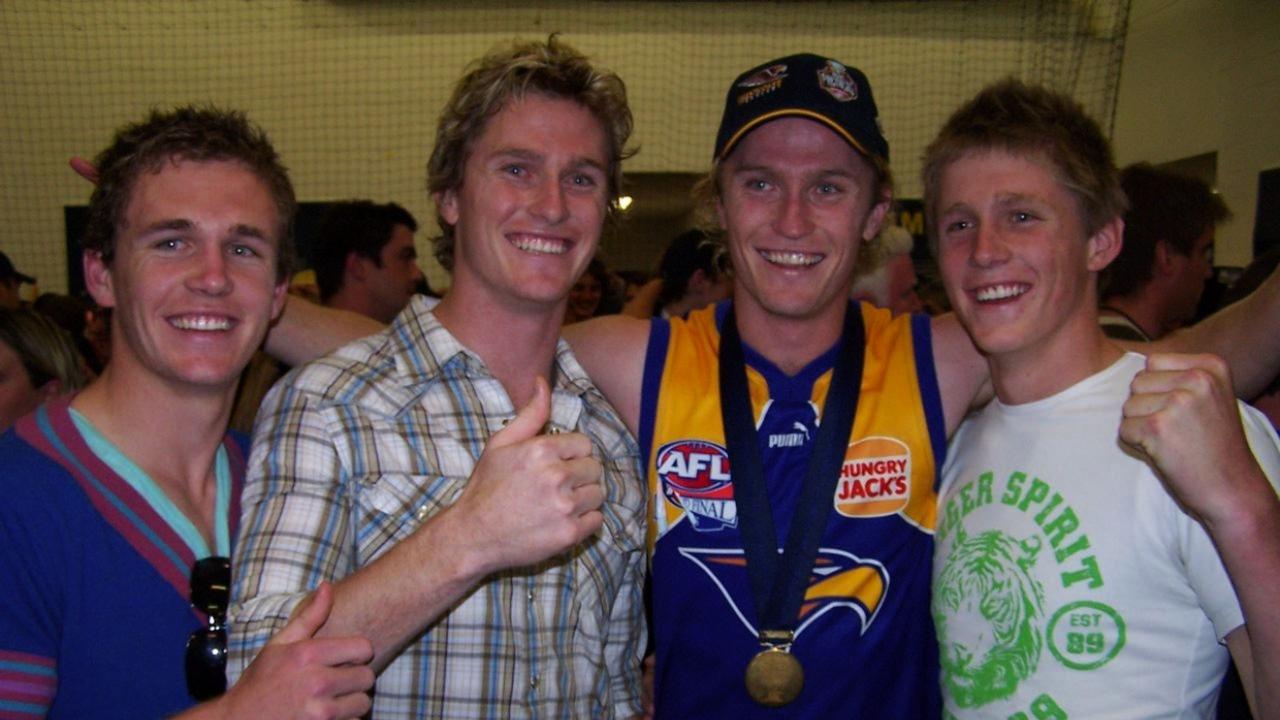Abolishing the interchange will bring back the exciting elements of the game, writes James Hird
CONGESTION, rolling mauls and all 36 players in one half is not what we want to see on the footy field and JAMES HIRD has a radical solution to increase the game’s appeal.
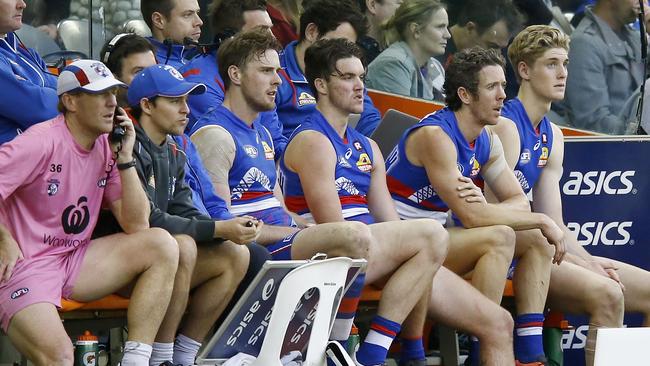
Expert Opinion
Don't miss out on the headlines from Expert Opinion. Followed categories will be added to My News.
CONGESTION, rolling mauls, all 36 players in one half, no century goalkicker in a season and ruckmen irrelevant except for the tap out.
These points have dominated the airwaves for a number of seasons.
Football is still the best game in the world. But it can be better.
FINALS RACE: WHO SHOULD YOU BARRACK AGAINST THIS WEEKEND?
PANIC ROOM: WHAT’S THE REAL STORY WITH BOB?
The simplest rule change to help solve congestion and reintroduce some of the most exciting elements would be to remove the interchange. Completely.
Man v man, direct competition between 18 opposing players. A battle of skill, endurance, courage and intelligence. Luke Hodge v Patrick Dangerfield; Joe Daniher v Jake Carlisle. Nowhere to hide.
The interchange was introduced in 1978 by the Australian National Football Council.
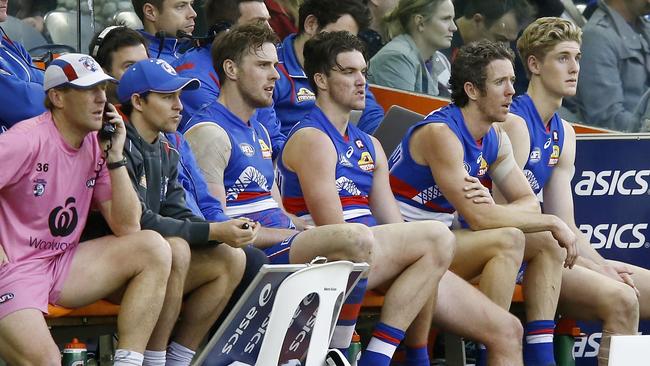
For many years we had two on the bench and interchange was used sparingly. Kevin Sheedy fought for four on the bench mainly for player welfare and safety.
But in the mid-2000s, West Coast and Sydney started using rotations to win games.
By 2012, interchange average was at its peak at 130 per team.
Every midfielder ideally had two rotations per quarter, maybe three, and deep forwards and backs one each per term. As a coach it was a nightmare.
Moves were predicated on player fitness, not necessarily football smarts or ability.
Rotations are now capped at 90 and further cuts are mooted, but a more radical response is needed.
No matter what anyone says, footballers are better now than they were 10 years ago, but they are better in a different way.
They are better athletes, know more about the game and many are better skilled.
But what would happen if we asked 14 or 15 of these players to play the full 100 minutes and took them back to being pure footballers again?
Each team could play with six substitutes who come on at any time, but once a player comes off, he is off for the rest of the game.
Players who come off for concussion testing would be allowed 20 minutes to be assessed and a substitute could play for that 20-minute period.
What would this do to the game? In my opinion the following will happen.
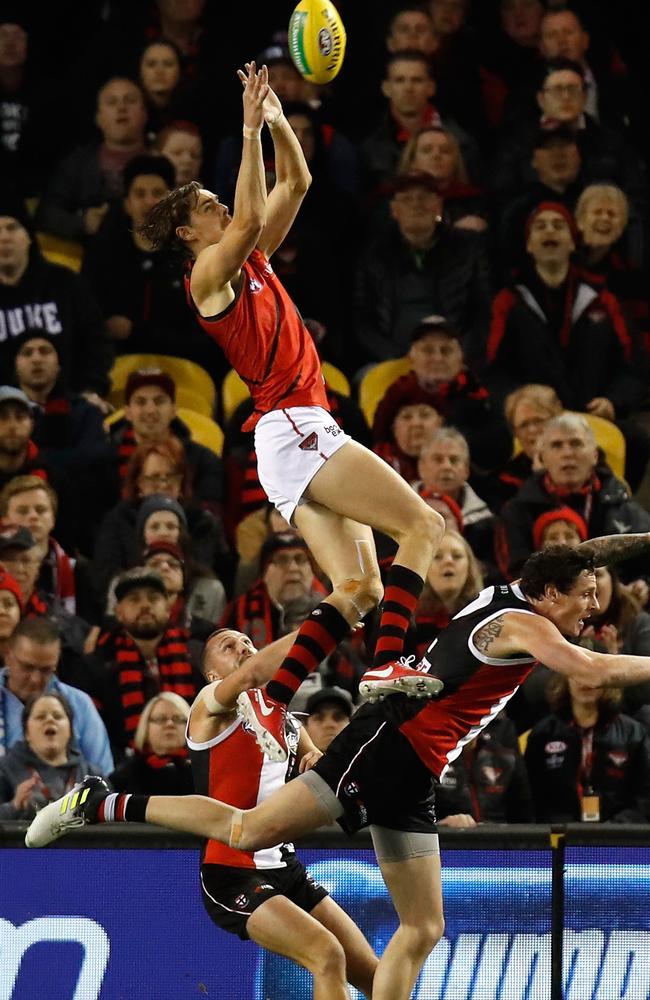
The need to play a six, six, six formation would be necessary as it would be impossible to run up and down the ground, forward press and make the ground bigger for 100 minutes without any rotations.
We would see the return of the midfielder who could kick goals as a resting forward.
Fatigue is likely to increase long kicking. Long kicking increases big marking and stay-at-home forwards. More speccies increases the game’s appeal.
An increase in long kicking would naturally cut short kicking which would reduce the number of uncontested marks and backwards kicks which are two of the least appealing aspects of our game.
Long kicking increases down-the-line kicking and the need for midfield crumbers.
Given players would need to play in more traditional areas, there would be great midfield match-ups and more inside hard contests at ground level off the long kicks.
Wouldn’t we all love to see Patrick Dangerfield go head to head against Dustin Martin — ALL DAY.
We may even see a game in which they both have 25 disposals and kick five goals resting in the forward line.
Long kicking also increases the need for two ruckmen. Football again would become a game for all sizes, not a homogenous game dominated by 190cm athletes.
Fatigue would see the return of the stay-at-home full-forward.
Dunstall, Lockett, Hudson, Lloyd and Roach may not have been as valuable to our game the way it is played today.
Through the onslaught of interchanges we have removed one of the iconic parts of our game.
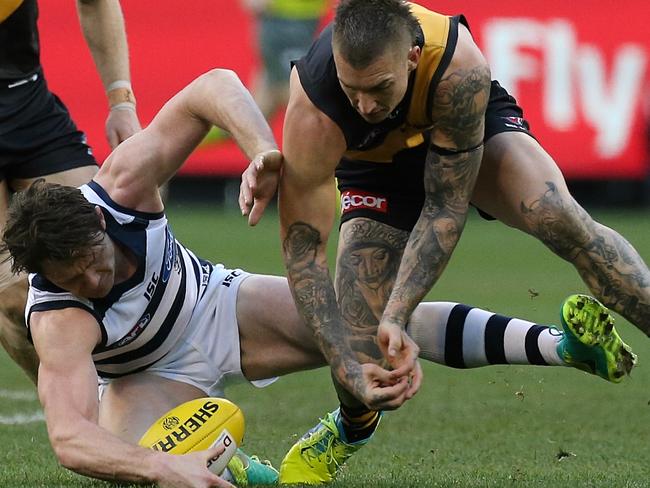
The 100-goals-a-season, high-marking full-forward is dead and buried unless we change something.
Tom Boyd, Jon Patton and Joe Daniher are all fabulous players, but wouldn’t it be great to see them one-out in the goal square jumping on heads and kicking regular bagfuls?
Increased fatigue would make players dump the ball by foot.
Handball overuse is a bugbear of all supporters and 90 per cent of umpire mistakes are due to handball throws or because of congestion or confusion over what is holding the ball and what isn’t.
Fewer handballs equals fewer umpiring decisions. That’s got to be a positive.
Ball winners, hard nuts and those with footy IQ would become more important than pure athletes.
We would lose some speed in the game, but the game would return to its origins — the need for a great ruckman, intelligent centremen, hard-working centre half-forwards and classic contests between a dour full-back and a star full-forward. Pure footballers would thrive.

Such a radical change will necessarily have an impact on injury rates and types, and player safety and welfare has to be top priority.
I’m not a doctor but with no interchange you could forecast fewer high-speed collision injuries but maybe more repetitive stress injuries.
The collision injuries tend to be the ones that have more serious consequences later in life, so I’m all for less of those.
Plenty of people will say this idea would take the game backwards.
But why not try to keep the good things while bringing back the great things that have been slowly lost?
The best coaches will still find a way. The best players will still find a way, but by removing interchange we would remove congestion, open up the game, create more kicking, more one-on-one contests and maybe even herald the return of the century goalkicker.
It’s worth a go.


